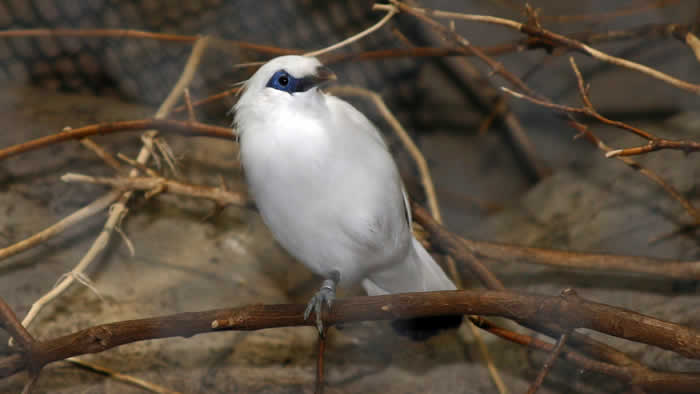During breeding season, the male common shelduck has a brilliant red knob on top of his bill that becomes duller in color throughout the rest of the year.
What They Eat
Common shelducks ducks feed on small marine invertebrates such as snails, mollusks, crustaceans and insects. These ducks typically feed at night, with the ebb and flow of the tide.
Where They Live
Found in Europe, Asia and northern parts of Africa, common shelducks tend to live in sandy or muddy areas near the coast, rivers, or on inland brackish lakes and marshes.
What They Do
Common shelducks form long-term breeding pairs. Their nests are usually made in anything enclosed, including man-made items, hollows in large trees, gnarled roots, sheltered bays, and even holes created by other animals such as rabbits or badgers. Males act as sentinels, monitoring the surrounding area where the female’s nest is hidden. In zoos, this behavior helps zookeepers find their nest sites.
How They’re Doing
The population of common shelducks is increasing and is classified by the International Union for the Conservation of Nature (IUCN) as “least concern” for extinction.
Europe, Asia and northern Africa
Habitat
Coastal areas, lakes, and marshes
Conservation Status
Animal Facts
Length: 24 inches
Weight: males average 2.6 pounds, females average 2.0 pounds
Wingspan: 39 – 52 inches
Lifespan: up to 14.5 years in the wild
Taxonomic Category
Bird
Where at the Zoo
Sidebar Content
- Males are bigger and have a large knob on their bill; females lack the prominent knob. During the breeding season, the male’s knob turns red.
- Both males and females appear to be black and white from afar. However, common shelducks have iridescent greenish-black heads and necks, with a chestnut band across their chest, and a dark stripe along their belly.
- Common shelducks will feed by walking forward with the tip of their bill buried just beneath the substrate, sweeping it back and forth. This behavior is called scything. They will also stomp their feet, possibly to bring snails to the surface and loosen the substrate for feeding.
- During breeding season, female common shelducks make a loud, rapid chattering or growling sound. In contrast, males utter varied whistling notes, especially when danger is near.
- A typical common shelduck nest contains 8-10 creamy white eggs.
- At a couple weeks old, common shelducks lead their young one mile or more to a “nursery” where they are joined by many young from different parents. The group size and composition alter frequently with ducklings joining and leaving different parents.
- Some parents leave their young before they are capable of flying so that they can migrate to molting grounds. The young are left with adult birds that are non- or failed breeders that do not migrate to molt.
- Common shelduck ducklings are fledged (capable of flying) at about 7 weeks of age.
Common shelducks are widespread and numerous, so are not currently at risk of extinction. The International Union for the Conservation of Nature (IUCN) classifies this species as “least concern” for extinction. Threats to common shelducks include habitat loss and hunting. Predation by mink occurs at some nest sites. Additionally, common shelducks are susceptible to disease outbreaks when they gather at seasonal molting and wintering sites in large numbers. The current global population of common shelducks is increasing and is estimated to include 625,000-750,000 individuals.














